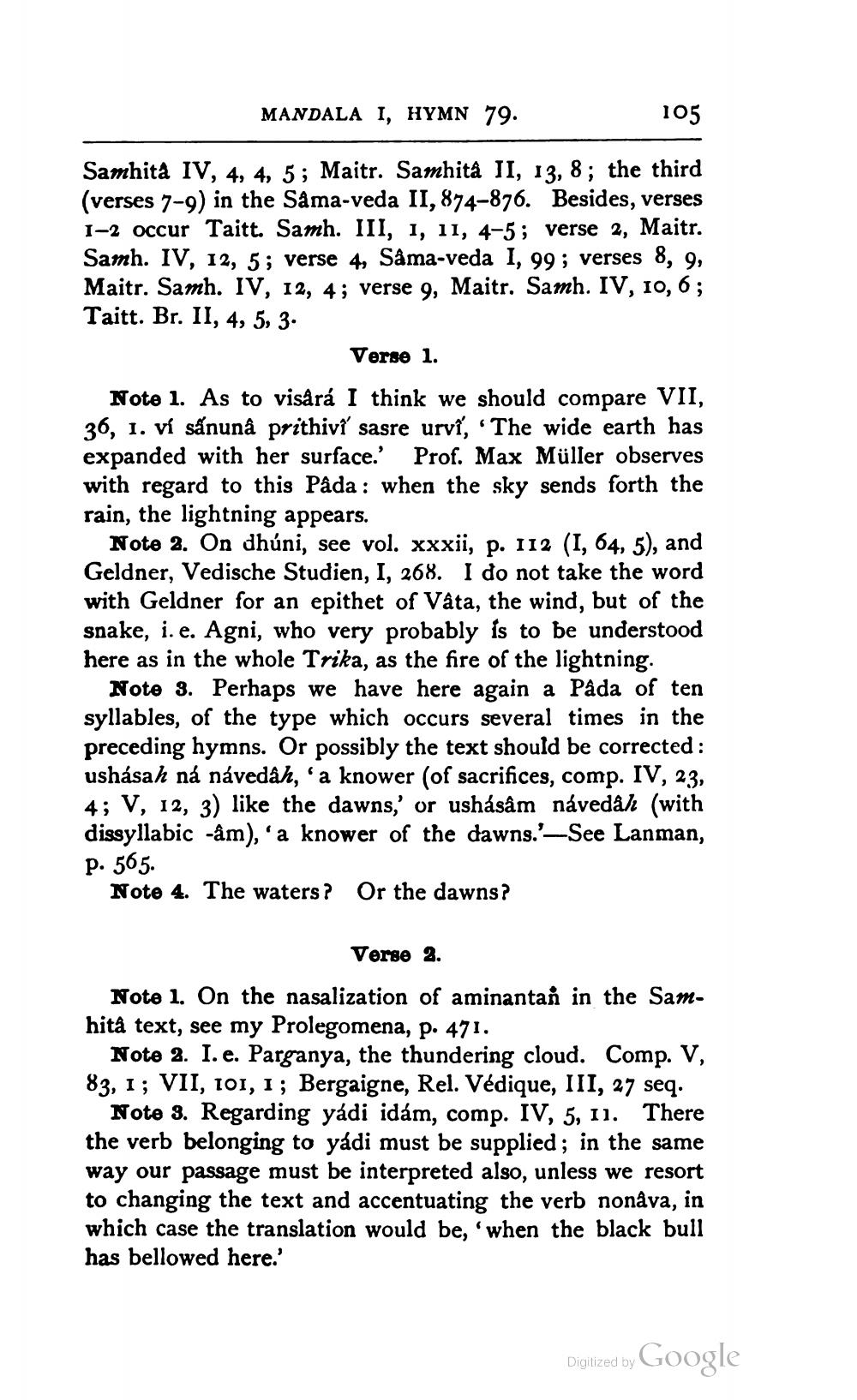________________
MANDALA I, HYMN 79.
105
Samhita IV, 4, 4, 5; Maitr. Samhitâ II, 13, 8; the third (verses 7-9) in the Sâma-veda II, 874-876. Besides, verses 1-2 occur Taitt. Samh. III, 1, 11, 4-5; verse 2, Maitr. Samh. IV, 12, 5; verse 4, Sâma-veda I, 99; verses 8, 9, Maitr. Samh. IV, 12, 4; verse 9, Maitr. Samh. IV, 10, 6; Taitt. Br. II, 4, 5, 3.
Verse 1.
Note 1. As to visârá I think we should compare VII, 36, 1. ví sánunâ prithivi sasre urvi, 'The wide earth has expanded with her surface.' Prof. Max Müller observes with regard to this Pâda: when the sky sends forth the rain, the lightning appears.
Note 2. On dhúni, see vol. xxxii, p. 112 (I, 64, 5), and Geldner, Vedische Studien, I, 268. I do not take the word with Geldner for an epithet of Vâta, the wind, but of the snake, i. e. Agni, who very probably is to be understood here as in the whole Trika, as the fire of the lightning.
Note 3. Perhaps we have here again a Pâda of ten syllables, of the type which occurs several times in the preceding hymns. Or possibly the text should be corrected: ushásah ná návedâh, 'a knower (of sacrifices, comp. IV, 23, 4; V, 12, 3) like the dawns,' or ushásâm návedâ (with dissyllabic -âm), 'a knower of the dawns.'-See Lanman, P. 565.
Note 4. The waters? Or the dawns?
Verse 2.
Note 1. On the nasalization of aminantan in the Samhitâ text, see my Prolegomena, p. 471.
Note 2. I. e. Parganya, the thundering cloud. Comp. V, 83, 1; VII, 101, 1; Bergaigne, Rel. Védique, III, 27 seq.
Note 3. Regarding yádi idám, comp. IV, 5, 11. There the verb belonging to yádi must be supplied; in the same way our passage must be interpreted also, unless we resort to changing the text and accentuating the verb nonâva, in which case the translation would be, 'when the black bull has bellowed here.'
Digitized by
Google




